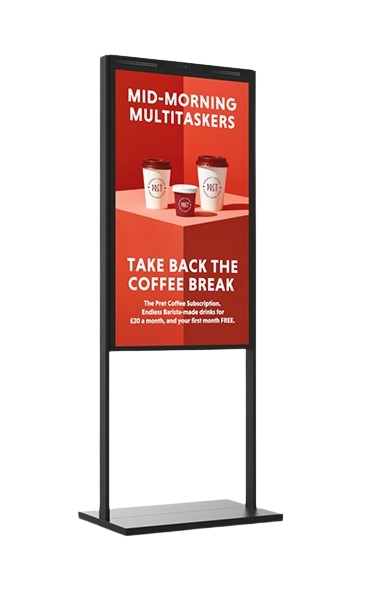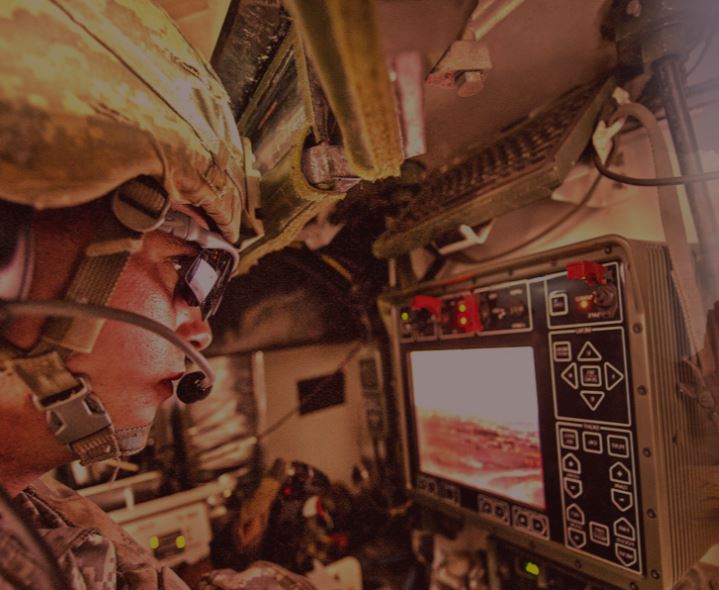+44 (0)1634 791600
info@crystal-display.com
Newsletter Sign Up!
+44 (0)1634 791600
info@crystal-display.com





Military Touchscreens
When it comes to military environments, one issue arises repeatedly: viewability. The need to have the maximum clarity and purest blacks is often a key demand. So how does this impact touchscreens? Well, most touchscreen technologies, aside from IR, require some sort of coating on the surface of the touch interface, or glass that can affect the degree of light transmission. Ah yes, you say, but military displays almost always need some sort of coating anyway, don’t they? Well yes, this is indeed often the case. However, the layers needed to make the touchscreen operate are typically thicker and less optically pure than the specialized filter lays used by the military. For example, the ITO layers used in PCAP touch components can reduce optical transmissibility by up to 30%. Touchscreens that use pure glass are the option to be considered when clarity is a high priority. These are typically traditional IR, and they present their own challenges.
Apart from optical considerations, there are other parameters that become key in military equipment. Depending on the operational environment, there can be EMI interference, ambient light issues and mechanical noise/vibration to be concerned about. Overall reliability is a big concern, of course. NVIS compatibility is often a factor too and can be very challenging when it comes to the newest versions of NVIS devices.
PCAP touchscreen layers example
In this example, at least five layers have been added between the display and the viewer. Whilst the ITO layers have reasonable optical clarity, they do affect display quality, and may even affect viewing angle. Each of the fine ITO layers is made up of semiconductor material and has the effect of blocking out some degree of light. Think of them as the bug screen on your window, you can see out with the screen in place, but it is blocking 30 – 50% of the light. Additionally, layers of insulation may be needed to attempt to mitigate electrical noise, adding more complexity and giving rise to distortion of the image on the display. [Figure 2]
PCAP insulation layer touchscreen-example
PCAP touchscreens are also sensitive to electrostatic noise and interference. Despite many methods used to dampen or remove the effects of electrostatic noise, the fact remains that the almost invisible matrix used to sense touch is also akin to a big antenna array.
Resistive Touchscreen Technology
Resistive technology is often used in various touchscreen technologies. Resistive can be less expensive and is reasonably accurate and responsive. Whilst this type of technology has improved over the years and has been used in various military applications, it shares many of the disadvantages of PCAP, and adds a few of its own, however.
For example, resistive screens require a certain amount of activation force, typically 60 – 80 grams. Whilst this may not sound like much, if being operated by a gloved finger, considerably more force is required to compensate for the compression of the glove material. This need to be sure to press hard enough raises response times and makes room for errors. Resistive technology uses layers in a matrix in much the same way that PCAP does. However, even the best quality resistive touchscreens need more layers than their capacitive counterpart, meaning even more light is blocked as it passes through the device.
Resistive touchscreen layers
Not only is optical clarity more compromised, but there are also now more layers to potentially fail. This technology also relies on an electrical matrix to function and therefore suffers from the same potential for electrostatic interference as PCAP. Resistive screens are also prone to single-point failures. Because mechanical force is needed to make a contact, repeated operations in any given location can possibly cause a failure at that point
InfraRed Touchscreen Technology
InfraRed sensing has been around for decades. Beam-break touchscreens (traditional IR) are very effective and do not require anything more than a sheet of glass as a touch surface. IR touchscreens can be very responsive, and they are also less expensive to manufacture. At its simplest level, it is one IR light source, and one IR sensor or receiver. [Figure 4] This setup creates a beam that, if broken by something passing through it, triggers a circuit.
However, traditional IR touch screens suffer from significant issues and limitations that make them a less than perfect choice for a high-reliability environment. Among these are their susceptibility to external lighting conditions. Infrared light can be found in sunlight and from many other sources, for example, and when such “stray” IR enters the touch screen, it can cause false readings and ghost touches. Attempts can be made to minimize this by adding a douser or cover (see Figure 4) over the IR receiver, kind of like a sunshade, but this has a limited effect. In a high-flying aircraft cockpit, for example, the sunlight will shine brightly through the glass and will reflect off of many surfaces.
Another problem with IR beam break is limited resolution. Because you need pairs of light sources and receivers, these components have a finite size and need to be mounted onto the PCB. This means that resolution is limited to the spacing of the components. There are also implications for reliability. If anyone light source or receiver fails, particularly in a critical location, the touchscreen will fail to work as required.
So, is there any one solution that can minimize the potential problems of the technologies above?
As we all know nothing is perfect, but one solution, ShadowSense by Baanto International, overcomes many of the issues presented by other technologies.
What is ShadowSense?
Baanto ShadowSense touch technology is an innovative and patented optical position sensing technology. ShadowSense designs use high-performance sensors operating in the analogue domain to provide unprecedented performance, stability, and accuracy. ShadowSense requires only plain glass as a touch surface, thus allowing clearer optical paths for the display which, in turn, allows for the display to be operated at lower settings and reduce stress on the device.
Whilst ShadowSense is based upon IR light technologies, its patented features eliminate all the issues identified with traditional IR, and yet provide the performance of PCAP without the need for the various ITO layers.
Because ShadowSense operates in the analogue domain, versus digital for other technologies, it is possible to use special electronic techniques to filter out unwanted IR signals, making ShadowSense 100% immune to ambient light interference. Furthermore, its proprietary design means that the limitations traditional of resolution are removed and, by virtue of its architecture, ShadowSense is inherently highly reliable.
Interested in learning more about how Baanto Shadow Sense can help you? Get in touch with us today!
Call us today +44 (0) 1634 791600
Send us an email for more information